Introduction to Sedum Flowers
Explore the diverse world of sedum flowers, also known as stonecrop, and get a glimpse into their resilient nature and varied forms. These hardy beauties are the troopers of the plant kingdom, thriving where others might shy away. Imagine a tapestry of fleshy leaves and star-studded flowers, forming a kaleidoscope of hues across rocky ledges, alpine screes, or the nooks of your own garden wall.
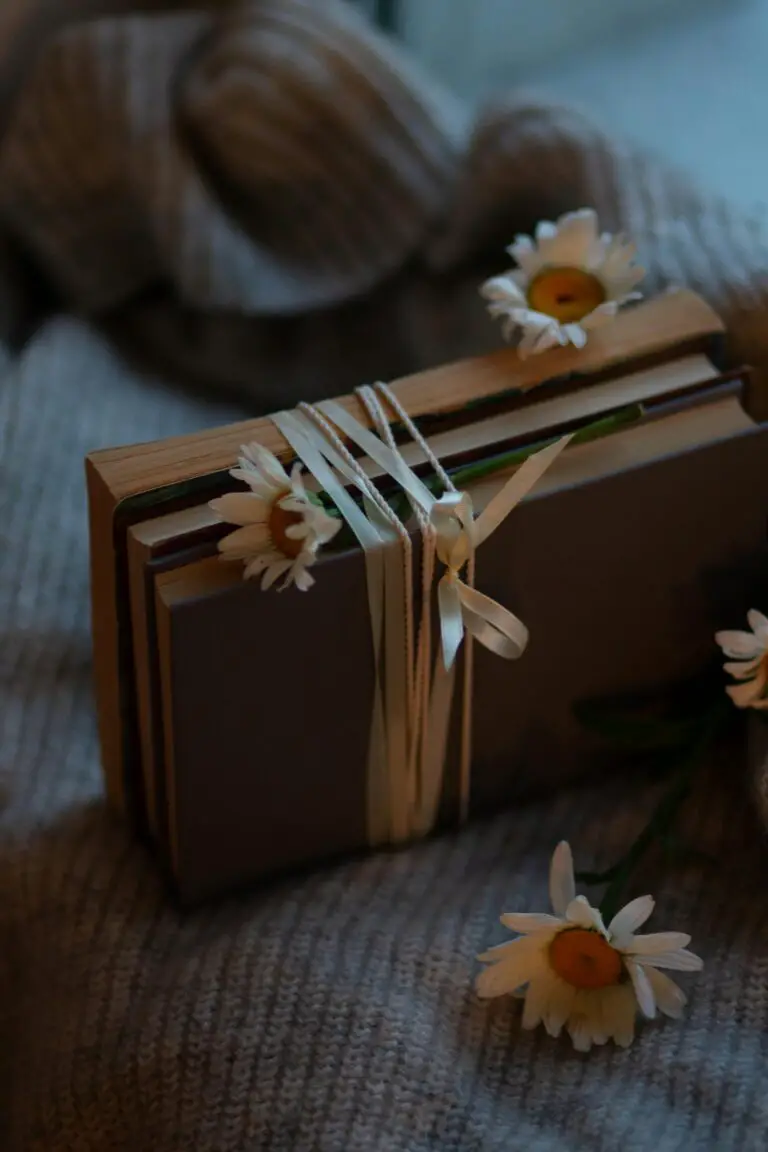
Renowned for their drought resistance, sedums are often found in the wild, painting rugged landscapes with their vibrant blooms. But it’s not just about the wild for these adaptable plants. Gardeners obsess over them too! They are like the favorite child—ask any gardener about their carefree nature, and you’ll hear tales of minimal upkeep and maximum impact. Whether it’s the sedums’ ability to liven up a rock garden or their knack for providing autumn fireworks with their burst of flowers, these succulents have a way of leaving onlookers in awe.
But let’s dive deeper into the ingenuity of sedums. In the urban wilds, its sculptural forms are not merely surviving but thriving, sprouting through cracks in pavements with a tenacity that inspires city poets. They seek no fanfare for their endurance, yet they teach humanity a lesson in adaptability and resilience. And in your home gardens, their no-fuss attitude translates into a low-maintenance charm, a gift for those seeking greenery without the green thumb.
Indeed, the sedum enchantment is far-reaching, spilling over from eclectic wildscapes to manicured floral arrangements, proving that sometimes, the simplest things possess the most profound beauty.
Origins and Habitat: The Natural Abode of Sedum
Embark on a botanical adventure to uncover the fascinating origins and natural habitats of the resilient sedum. These hardy plants can be found embracing a myriad of landscapes, from the sun-soaked rocky cliffs to the serenity of alpine meadows. Sedum, or stonecrops as they are affectionately known, are not just garden cultivars but are seasoned travelers in the plant kingdom—displaying an extraordinary ability to flourish in varied terrains and climates.
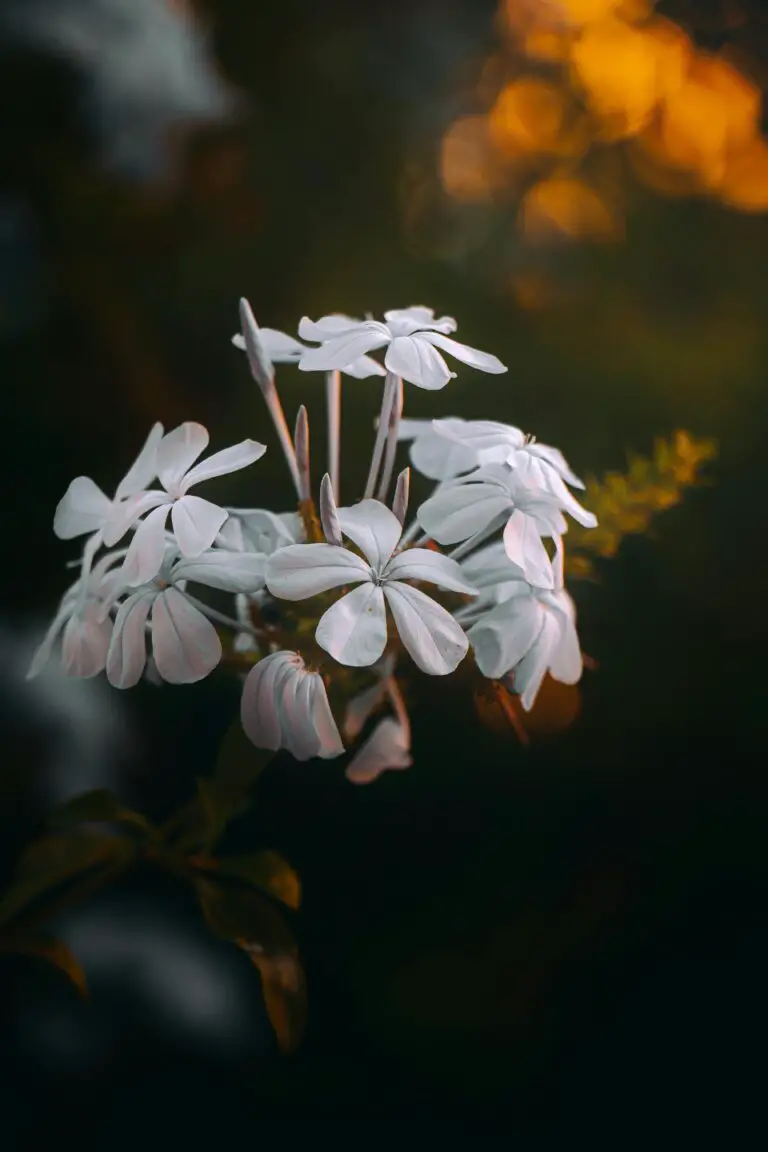
Imagine, if you will, sedum plants teetering on the edge of craggy mountain ledges, where the air is crisp and the soil is scarce. Here, they stand undeterred, basking in the high altitude sun and shaking off the chill of brisk winds. Their succulent leaves, a marvel of nature’s engineering, are designed to retain water, enabling these intrepid plants to stave off drought in the most arid of environments.
But the sedum’s adaptability doesn’t end on the mountain pass. These botanical wanderers also find sanctuary in the flat expanses of coastal regions. Breezes infused with sea salt that would wither less hardy species are no match for the sedum, which thrives amidst the sand and stones, conjuring a tapestry of vibrant hues that hug the earth with their low-growing demeanor.
The versatility of the sedum family shines, as they also grace the urban environment. You can often spot them thriving in the nooks and crannies of city life, from rooftop gardens to crevices in walls, where they spread their joy with little demand for care. In fact, tips for their care are sought after by urban gardeners seeking to add a touch of nature’s resilience to their concrete abodes.
Favoring the sun yet capable of enduring partial shade, these versatile florae have disseminated far and wide from their geographical origins, demonstrating that when it comes to finding a place to call home, sedum flowers are the unequivocal champions of the plant world. Whether clinging to arid deserts or flourishing in temperate gardens, they remain beautifully indifferent, greeting the world with a spectrum of color and life, wherever they may grow.
Sedum Varieties and Their Preferred Conditions
Step into the world of sedum, a plant genus as diverse as it is resilient. With an impressive spectrum of species dotting landscapes from arid deserts to rocky alpine outposts, these hardy succulents are the go-to for garden enthusiasts and landscape architects alike. But hold on—while they are flexible, not all sedums are created equal. Let’s explore some of the stars of the genus and their ideal growing conditions, shall we?
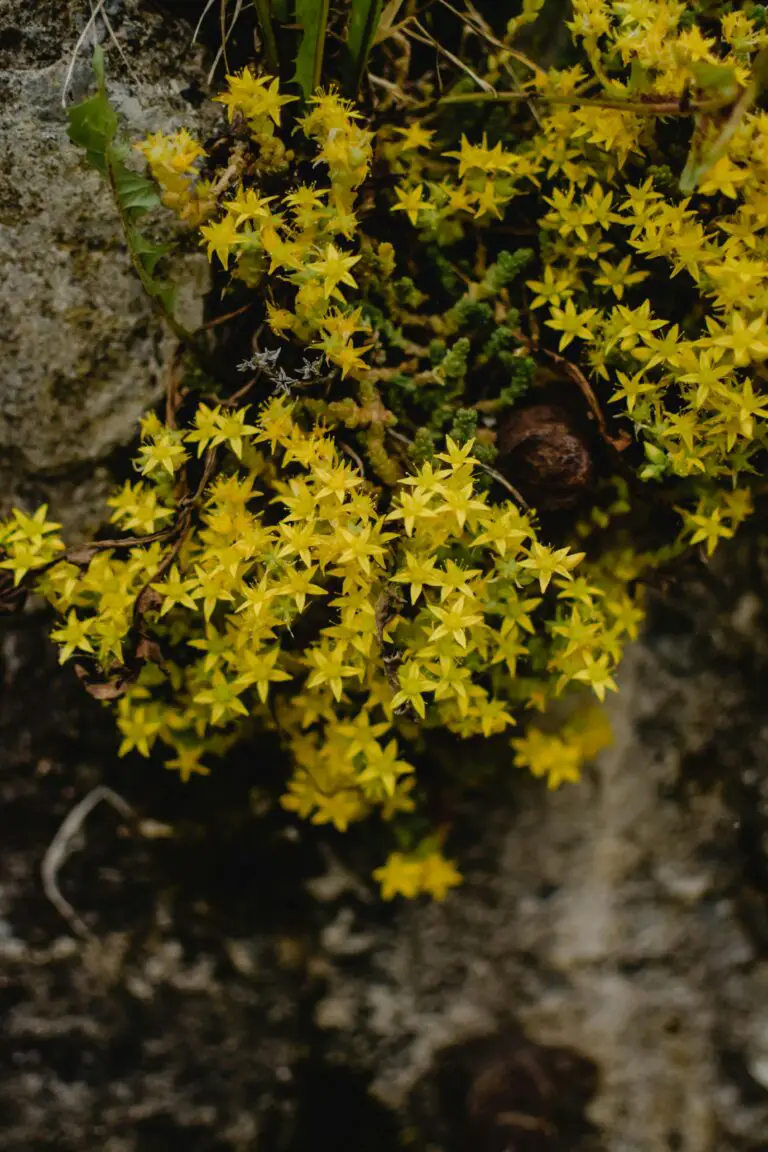
Take Sedum acre, commonly known as “Goldmoss,” a sun worshipper if there ever was one. It basks in full sunlight and well-drained soil, turning rooftops and rock gardens into a spectacle of vibrant yellow during its peak blooming season. Then, waltzing in with a slightly different appetite for sunshine and a penchant for cooler climates, is Sedum telephium, or “Autumn Joy.” This variety prefers partial shade and, like a true joy of autumn, lifts spirits with its deep pink blooms as summer bids adieu.
Moving on to a storybook cottage where Sedum sieboldii drapes over stone walls in whimsical fashion. Hanging baskets are another stage for this stunner, which flaunts its pink blossoms and, unlike its full-sun-loving cousins, asks for only a dapple of sunlight each day. One mustn’t forget Sedum spurium, the tough-as-nails “Dragon’s Blood,” weaving its crimson glory through the cracks of flagstone paths and stepping stones; partial sun and drought aren’t match for this fighter.
If you’re curious to learn more about how these diverse species can enliven your garden space, don’t miss out on our exclusive insights at Sedum Sanctuaries: Cultivating Your Succulent Garden. It’s a treasure trove of tips and tricks for the sedum enthusiast!
Now, imagine a coastal bluff where Sedum reflexum, also known as “Blue Spruce,” carpets the ground with its blue-green foliage, laughing in the face of salty sea sprays. This is nature’s testament that sedums don’t just survive; they thrive, bringing life and color to corners of the world where few dare to bloom.
From the cascading waterfall of petals in a cottage garden to the structured elegance of urban landscaping, sedum varieties elegantly adapt, painting nature’s canvas with their unique brushstrokes of color and texture. Understanding the preferred conditions of these popular varieties opens the door to a garden filled with variety, resilience, and, above all, splendor—the very essence of what makes sedums a gardener’s delight.
Optimal Growing Zones for Sedum Cultivation
Imagine painting with a palette of plants, where sedums are your hardy little dabs of joy, dotting gardens with minimal fuss. Sedums, those resilient succulents, bask in sunlight and wrap themselves in a coat of many colors as the seasons twirl about. These are the versatile virtuosos of the vertical gardens and the rockeries, but where exactly do they strut their stuff the best? Let’s dig into the dirt and discover the USDA hardiness zones primed for sedum splendor.
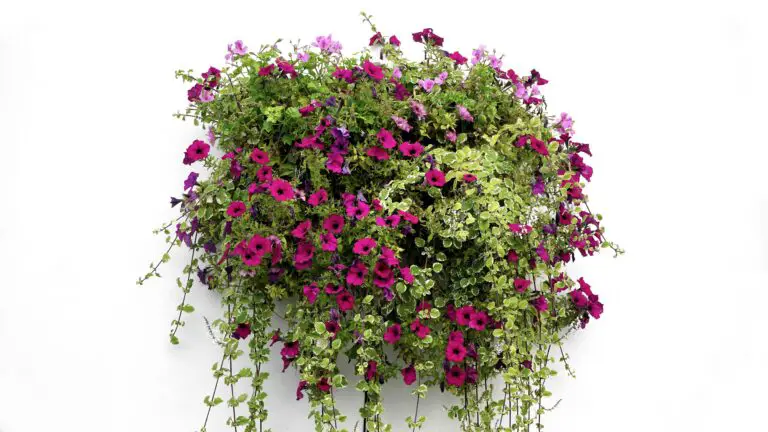
Casting an eye over the USDA’s plant hardiness zones, you’ll find sedums are not picky guests. They’ll grace your garden from the crisp cold of zone 3 all the way to the balmier breaths of zone 10. These succulents are steadfast, with a remarkable resilience that allows them to nestle into a vast array of habitats.
In the cooler embrace of zone 3, sedums don a frosty veneer, standing up to temperatures that dip down to a chilly -40°F. As we traverse to the warmer climes of zone 10, sedums simply soak up the sun, unfurling their foliage in a show of strength against the heat. The secret to their success is an almost Zen-like balance between drought tolerance and a knack for survival under a cloak of snow.
If you peek out your window and wonder, “Is this a sedum scene?” ponder no more. Whether it’s the unyielding urbanite cracks that speak of untold growth or the suburban sprawls craving easy-care greenery, sedums will likely flourish. So, roll out the welcome mat and let these undemanding denizens decorate your space with their stoic beauty.
The Perfect Soil: Preparing the Ground for Sedum
Imagine a resilient garden warrior, unyielding to drought and poor soil conditions. That’s the lovely sedum for you! These hardy charmers, known for their vibrant colors and diverse forms, are a garden staple. But what’s their secret to success? It’s all about starting with the right foundation: the perfect soil.
Let’s delve into the world beneath our feet and discover what makes the ideal growing conditions for sedum plants. Unlike the prim and proper roses that demand rich, high-maintenance beds, sedum flowers are the laid-back cousins who are content with a modest setting. They ask for a well-draining home, despising “wet feet,” which can lead to root rot faster than you can say “succulent.”
When we talk about pH preferences, sedums aren’t picky, but they lean towards a neutral to slightly acidic range. Think pH levels of 6.0 to 7.5—if you’re keen on getting specific. A simple soil test can reveal where you stand on the pH scale, a sort of ‘social media profile’ for your garden’s ground, letting you know if you need to make any adjustments.
The texture of the soil also counts. Imagine you’re creating a five-star spa where the sedums can stretch their roots. You want soil that’s akin to a light, fluffy robe—loamy and airy. Heavy clay soils are the equivalent of a bouncer denying entry to air and water. So if you’re dealing with sticky clay, consider working in some perlite or sand to break up the soil and promote drainage.
Upgrading your soil might seem daunting, but it’s like crafting the perfect cup of artisanal coffee. Once you’ve got the balance of ingredients just right, the results are spectacular. One can mix in compost or decomposed leaves to enrich the soil naturally. And before you know it, your sedum plants will be blooming with gratitude.
Let’s not forget real-life examples of sedum doing well in the wild. These tenacious bloomers often settle atop rocky ledges or in gravelly roadside niches where other plants wouldn’t dare to tread. They’ve got this ‘thriving against odds’ mantra down to an art and we, as gardeners, can learn from their resilience.
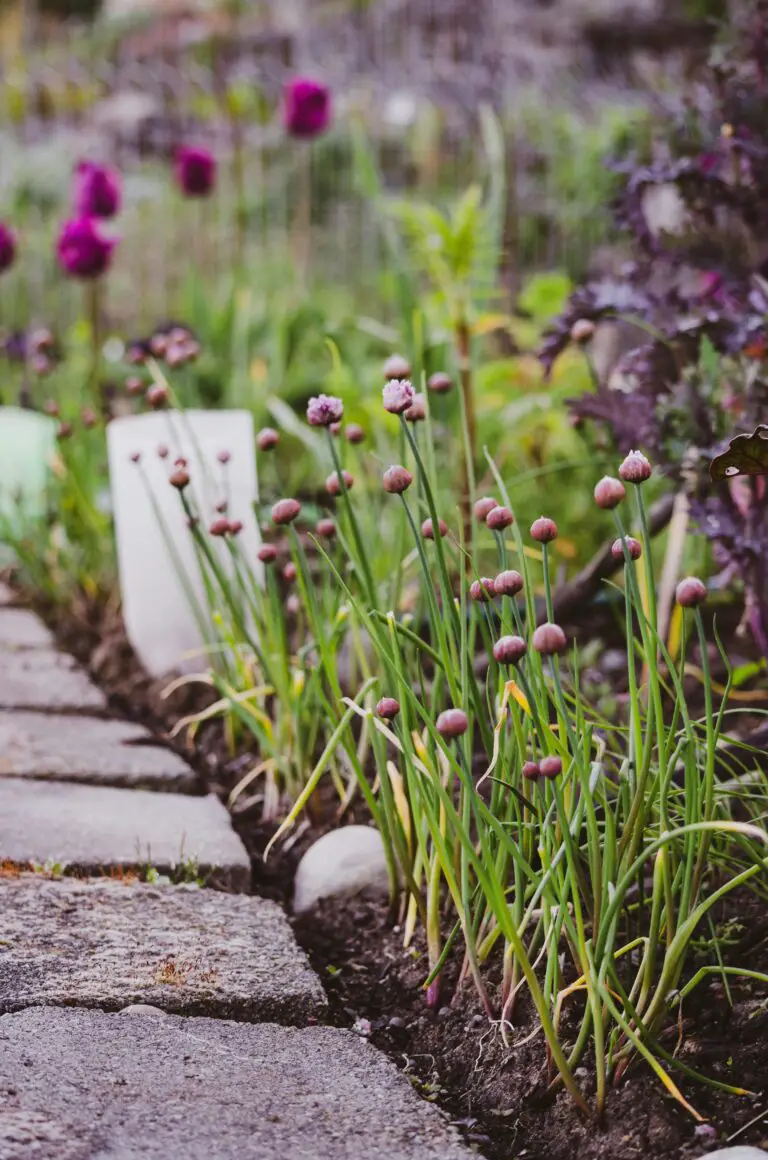
Ultimately, caring for sedum flowers is like being a benevolent ruler of a plant kingdom. You provide the right environment—well-draining, neutral to slightly acidic soil with a light, airy structure—and they’ll reward you by growing prolifically, bringing a splash of low-maintenance splendor to your garden. Roll out the red carpet of ideal soil conditions and watch as these hardy flowers take the throne and reign supreme in their natural glory!
Sunlight and Shade: Balancing Light for Healthy Sedum
Ah, the sedum flower, a resilient beauty that dances with the sun. Cultivating these hardy flowers is like conducting a symphony of light—orchestrating just the right amount of sunbeams and shadow to hit the sweet notes of vibrant growth. Picture this: too much sunlight, and your sedums might wince and wither, like an overbaked cookie in a relentless oven. Yet, swathe them in too much shade, and you’ll find them stretching out, limber and lanky, in a desperate search for those golden rays.
Sedums are sun worshippers—there’s no doubt about that. They crave the caress of full sunlight to unfurl their colorful blooms. A minimum of six hours of direct sunlight is the golden rule, something akin to a sun-soaked picnic for these succulent plants. In these ideal conditions, you’ll witness a spectacle of blossoming at its finest, as if each flower is vying for a starring role in the garden theater.
However, even the most sun-thirsty sedums appreciate the occasional retreat into the shadows, especially in scorching climates. Imagine the nurturing coolness of a tree’s canopy on a hot summer day—that’s exactly what a bit of shade offers to your sedum. It’s a delicate balance, though. Filtered light that plays peekaboo through leaves could be just what the doctor ordered for a midday siesta, allowing your sedum to catch its breath without missing out on the light show entirely.
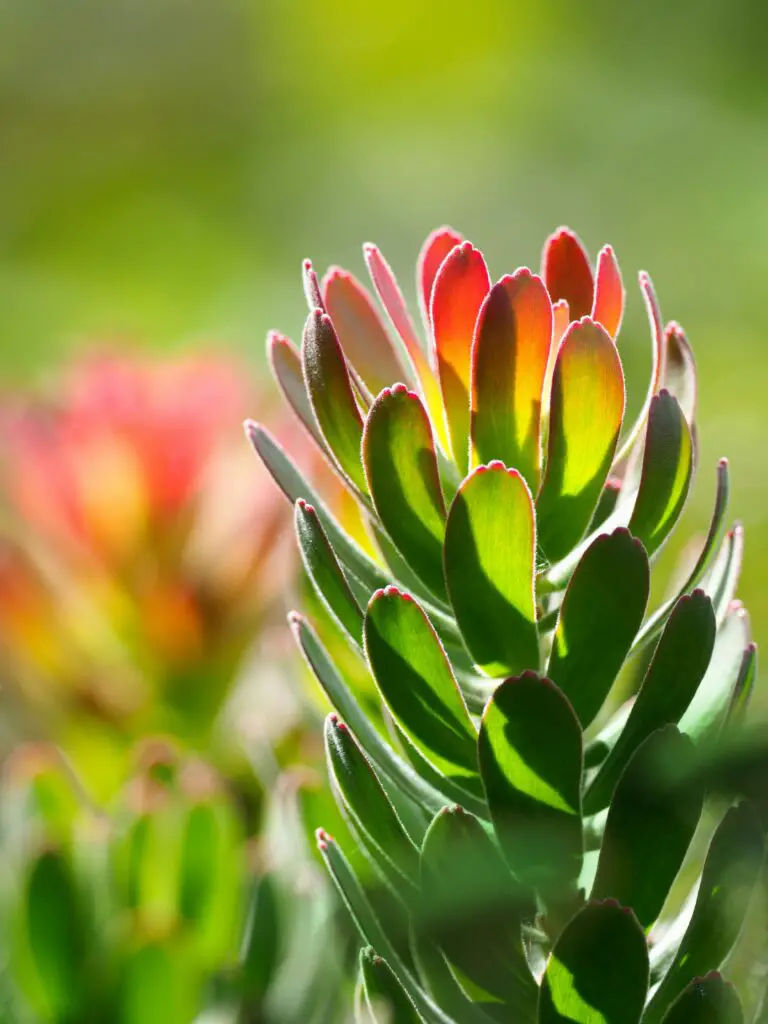
Consider the real-life tale of a gardener’s sedums in Texas. With temperatures hotter than a habanero pepper, the midday sun can be a cruel mistress to these plants. Yet, with a brilliantly devised lattice of shade, this gardener managed to filter out the most brutal hours of sun, granting the sedums a fair chance to thrive. Lo and behold, not only did the plants survive, they put forth a performance of blossoms so spectacular, it could rival any firework display on the Fourth of July.
So, aspiring sedum aficionados, remember the art of light-balancing: ample sunlight to bath in, dappled shade to rest, and a watchful eye to keep the extremes at bay. Sedums don’t yearn for just any patch of dirt—they seek the perfect stage where the spotlight and the soothing shade coexist harmoniously, allowing them to erupt in a crescendo of hues and textures that would leave any onlooker in awe.
Watering Wisdom: Hydration Tips for Sedum Success
As enthusiasts of the resilient sedum flower, we often marvel at its ability to flourish with minimal fuss. The key to its hearty nature? Understanding its watering needs. Much like a camel traversing the desert landscape, sedum plants have an innate ability to store water and thrive in dry conditions. So, let’s dive into the hydration habits that keep these succulent beauties sprightly.
Imagine a sedum plant like a seasoned hiker—the kind who knows every nook and cranny of a sun-soaked canyon. One might think that frequent water breaks are the secret to endurance, but for our sedum friend, the opposite holds true. These plants have evolved to make the most of occasional rain showers, soaking up moisture and retaining it for the long haul in their fleshy leaves. It’s this drought-tolerant superpower that makes them an excellent choice for forgetful gardeners.
Watering sedum is more about restraint than generosity. Picture yourself holding back on that watering can, giving your succulents a deep drink only when the soil feels like a dry savanna under your fingertips. This infrequent but adequate approach mimics the natural, sporadic rainfall of their native habitats. It’s not about a tight schedule, rather it’s the ‘wait and see’ game, watering only when needed as the seasons roll by.
But even the hardiest of plants have their preferences. While sedums are not as high-maintenance as a prize rose, they still flourish best with the right touch of moisture. The ideal routine? Allow the earth around them to dry out thoroughly before you reintroduce water. This cycle encourages robust root systems and helps prevent the dreaded soil sogginess that could lead their stout little hearts to rot.
Incorporating real-life scenarios, think of that time when you spotted a sedum clump in a rock garden, basking in the heat, seemingly invincible against the elements. That resilience is what you’re aiming for. By watering wisely, you provide these robust plants with the exact conditions they need to showcase their verdant vitality and colorful charm.
To put all this into moving images, here’s a video packed with essential tips for keeping your sedums sufficiently sated without going overboard:
By embracing these watering wisdoms, your sedum plants will not only survive; they’ll thrive, painting your gardens with their low-maintenance splendor. Keep these tips in mind, and watch as your sedums stand proud, defying drought and blooming with tenacity, wherever they grow.
Sedum in Landscaping: Design Ideas and Uses
Imagine stepping into a garden where bursts of color blend with structural beauty, and year-round interest is a central theme. That’s the magic of sedum—the stately succulent! Beloved by gardeners for its low-maintenance charm and by pollinators for its nectar-rich blooms, sedum is more than just a plant; it’s a versatile artist in the world of landscaping!
Now, let’s paint our green canvas with the diverse palette of sedum. Picture a rock garden, where the nooks and crannies are awash with the textured foliage of ‘Sedum spurium’ or ‘Dragon’s Blood.’ The sedum’s resilience shines here, turning rugged terrain into a tapestry of vibrant greens and reds. But the spectacle doesn’t end there. As summer wanes into fall, these hardy flowers burst into starry blossoms, igniting the garden with autumnal fireworks.

Envision next a contemporary courtyard where architectural forms are echoed by the bold shapes of sedum. Be it the ‘Autumn Joy’ or the ‘Matrona’, their tight clusters add a striking visual contrast to ornamental grasses and broad-leafed perennials. These sedum varieties bridge the gap between formal design and wild nature, offering a modern edge to eco-conscious landscaping.
Don’t just stop at the ground level, though. Sedum isn’t just for flower beds or borders; it’s a rooftop champion, too! Green roofs are buzzing habitats, and sedum plays a key role here with its drought tolerance and hardiness. Picture a sedum-blanketed roof in the cityscape, not only serving as a haven for bees and butterflies but also cooling down urban heat islands—a small step for sedum, a giant leap for sustainability!
Finally, think of the English cottage garden where chaos and charm collide. Amidst the billowing blooms and twisting pathways, sedum serves as an anchor—a steadfast companion to the whimsical dance of foxgloves and roses. With varieties like ‘Cape Blanco’ and its silvery hue, or ‘Coral Carpet’ blush, sedum is no shy contender. It’s the secret ingredient in the perfect blend of texture, form, and flowering grace.
There you have it—a glimpse into the varied roles sedum can play in shaping our landscapes. Whether it’s stitching together the rugged beauty of a rockery or crowning green roofs in urban jungles, sedum is the resilient soul of garden design. It’s not merely about where these hardy flowers grow, but how they transform the spaces they inhabit into living works of art.
Maintenance and Care: Keeping Your Sedum Thriving
Imagine a plant that can stand tall in the face of blazing summer suns, laugh off the winter’s frost, and still bloom with the cheeriest flowers. Enter the sedum, a resilient garden champion that thrives with minimal fuss. Let’s dive into some easy-care tips to ensure your sedum remains the superstar of your garden.
The Simple Pruning Protocol
With just a few snips here and there, you can keep your sedum looking neat and encourage more blooms. It’s like giving your plants a nice haircut! After flowering, lightly trim back the stems to promote a second bloom. It’s a good practice to take the “less is more” approach – pruning too much might do more harm than good.

Natural Pest Control
You won’t need a chemistry degree for this one. Sedum plants are tough cookies, but they can attract the occasional aphid or mealybug. The good news? A sharp spray of water or a dab of soapy water can send these pests packing. And if you’re feeling especially garden-savvy, why not invite some ladybugs and lacewings over? They love to snack on unwelcome pests.
Propagation Made Easy
Why buy new plants when you can make more on your own? Get this: sedum propagates effortlessly. Just snap off a stem, let the end callous over for a day or two, then stick it into some well-draining soil. Keep it slightly moist, and before you know it, you’ll have a new sedum buddy sprouting up!
Following these guidelines will ensure that your sedum won’t just grow; it’ll flourish and become the envy of the neighborhood. So arm yourself with your pruning shears, a friendly attitude to bugs, and a dash of propagation magic to keep your sedum in splendid shape.
Overcoming Challenges: Addressing Common Sedum Growing Issues
Whether you’re a green-thumbed guru or a budding enthusiast, growing sedum can occasionally throw a curveball your way. These hardy flowers generally ask for little, yet sometimes they signal distress, leaving you to wonder where things went awry. Let’s delve into the art of identifying and resolving the typical quandaries sedum cultivators may encounter.
Waterlogged Woes: Evading Overwatering
In the realm of sedum caretaking, overzealous watering is a frequent faux pas. Picture this: The skies open, doling out a deluge that your garden drinks up. But when the clouds clear, your sedums are soggier than a sponge in a rainstorm. Too much moisture can lead to root rot, a dreaded issue for any plant. Combat this by ensuring adequate drainage in your pots or planting beds. Employ a well-draining soil mix, and perhaps gravel beneath your sedum’s roots, letting excess water escape and avoiding the waterlogged tragedy.
Soil Saga: Perfecting the Groundwork
Imagine you’ve settled your sedums into what seems to be an idyllic spot, yet they languish and loiter rather than leap and thrive. Poor soil could be the culprit, silently stifling your sedums’ potential. These resilient blooms prefer a soil mix that mimics their natural rocky habitats—well-draining, airy, and only modestly fertile. If you suspect your soil is more clay than crumb, a soil amendment could be in order. Mix in coarse sand or perlite to transform that dense dirt into a sedum sanctuary.
While it might seem like a lot to take in, don’t be discouraged! Growing sedum is generally straightforward once you know the ropes. Check out this insightful video for a visual guide on how to avoid sedum-growing issues and to breathe new life into your garden’s succulent stars.
Remember, when you’re facing sedum setbacks, a little troubleshooting goes a long way. With these tips at the ready, you’re well on your way to nurturing a flourishing sedum display that brims with vitality. Embrace the challenges, for they are but stepping stones on the path to a resplendent garden full of sedum splendor.
Frequently Asked Questions
Got a burning question about growing sedum? Let’s dig into the gritty details that every budding sedum enthusiast is eager to unearth! Whether you’re curious about the resilience of these tough bloomers or simply want to know how to keep them from staging a garden takeover, we’ve got you covered.
Can Sedum Survive Frost?
Picture this: it’s the first frost of the year, and while other plants are waving white flags, sedum stands tall, unfazed. These hardy perennials laugh in the face of frost, with many species toughing it out through chilly conditions. Sedum’s secret weapon? Succulent leaves that store water, allowing them to resist the cold’s crushing grip. So, let Jack Frost do his worst; sedum will be just fine, thank you very much!
How Quickly Does Sedum Spread?
Sedum is like that friend who shows up for a weekend visit and then never leaves – it spreads at a pace that can be surprising. Depending on the species, some sedum plants can be quite the space invaders, quickly covering ground with their vibrant, fleshy leaves. If left unchecked, a single sedum can blossom into a sprawling carpet in just a season or two—perfect for filling gaps but watch out for your other plant pals.
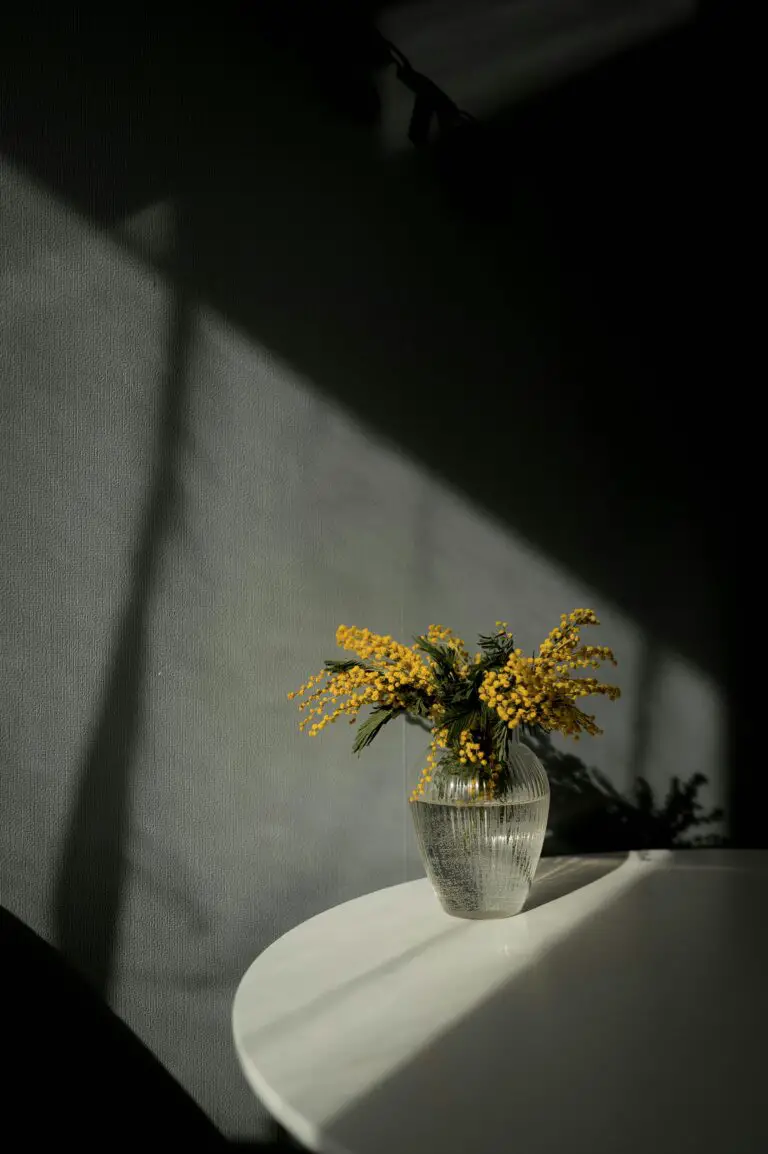
Intrigued by these unyielding growers? Just give sedum the right soil to sink its roots into and watch as they transform your garden into a patchwork of resilience and beauty. Remember, though: with great spreading power comes great responsibility. Keep an eye on your sedum’s conquering tendencies, and your garden will be a sedum splendor in no time!


